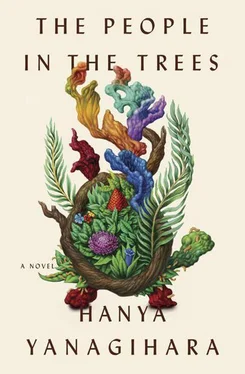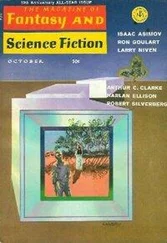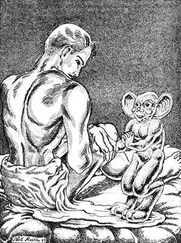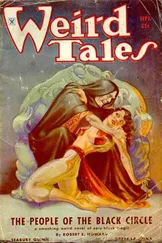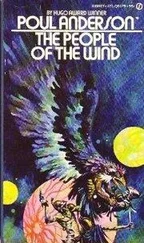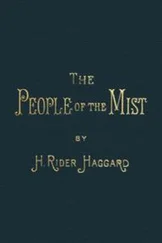Besides Gripshaw, Hetherington suggests that Norton was funded out of, as he puts it, “some mysterious slush fund,” one bankrolled by a governmental agency interested in developing new drugs. This theory is actually less cloak-and-dagger than it sounds. It was, of course, 1950, barely five years after the end of the war, and at the time a great deal of money was being invested not only in the relatively embryonic field of virology but also in a very early iteration of biowarfare. It is entirely possible that Stanford was one of the universities given a grant to pursue such studies and experiments and found a worthy recipient in Norton. (Katharine Hetherington, An Island True and Small [New York: Pantheon, 1992], 205–18)
49In the meantime, Norton kept himself busy with a number of extracurricular projects, the most important of which was a paper, published in April 1951 in the Annals of Herpetology , in which he identifies the opa’ivu’eke as a previously unknown salt- and freshwater turtle. The paper, while brief, is surprisingly charming; with it, Norton reveals that he too had been taking copious notes on the island, and indeed, his observations of the opa’ivu’eke’s (or Chelonia perinia , as it is now formally known) activities and behaviors have been cited countless times in the decades since. Aside from producing the satisfaction that comes from discovering and naming a new life form, this paper also laid necessary groundwork for Norton’s future paper, the famous “Eternity Claim,” which he would publish nearly two years later.
The Herpetology paper garnered Norton a great deal of attention in zoological circles, and for a brief time he even considered moving into the field; the only thing that stopped him, as he later realized, was his fundamental lack of passion for reptilia. Not everyone was happy with Norton’s report, however; in her memoir, Duff claims that she and Tallent were the true discoverers of the opa’ivu’eke and that credit should be given to them. Even if that could have been proven, however, all scientists know that — fairly or not, although fairness seems somewhat beside the point at this level — it’s the person who actually reports the finding to the scientific press who gets the credit for the discovery, not the person who merely makes note of it in his logbooks or journals.
It is unknown what Tallent thought of Norton’s report about the opa’ivu’eke. His few existing papers include no mention of it, and Norton has never revealed whether the two of them ever spoke of it.
50Norton’s earlier study about the turtle was of course cited in Tallent’s paper.
51Norton Perina, M.D., “Observations on Prolonged Human Longevity Among the Ivu’ivu People,” Annals of Nutritional Epidemiology (December 1953), vol. 42, 324–28.
52Norton’s revolutionary paper (commonly known as the “Eternity Claim” paper) was not the only gauntlet thrown down to the mainstream medical and scientific establishment that year. In April, James Watson and Francis Crick had published their brief postulative paper in Nature , “A Structure for Deoxyribose Nucleic Acid,” which first described the double-helical nature of DNA. This, coupled with Norton’s discovery, has led numerous scientific historians to identify 1953 as the “year of miracles”—ironically, of course, as miracles were exactly what these scientists strove to disprove with their research.
Although Norton was naturally highly impressed by Watson’s scholarship, he was not in general impressed by Watson the man, whom he found far too obsessed with his pursuit of women (a quest detailed by Watson himself in his memoir Genes, Girls, and Gamow [New York: Knopf, 2002]) and his hunger for fame, which continues unabated to this day.
53The purpose of Norton’s initial three experiments was to prove that the mice who were fed the opa’ivu’eke would, after a single feeding of the turtle, live on median significantly longer than their natural lifespan of eighteen months. Of Group A (the twenty-five fifteen-month-old mice), 81 percent of the animals were still living, making the median survival age in September 1953, when Norton submitted his paper for publication, forty-six months, which meant that their lifespans had been almost trebled. Of Group C, the hundred mice who were also fed the opa’ivu’eke at fifteen months, 79 percent were still alive at forty-one months, which meant their lifespans had increased by 150 percent. The control groups from experiments A and C — that is, the mice who had been fed the box turtle placebo — had a median survival of 17.8 months — in other words, their typical lifespan. Not discussed in Norton’s initial paper were the subjects of Group B (the fifty newborn mice fed the opa’ivu’eke in their infancy). All of them were, astonishingly, still alive at the time the paper was written, at thirty-one months old. But because their lifespan had not yet been proven to have been doubled by eating the turtle, Norton decided that publishing their results was still too premature.
The scientific importance of Norton’s experiment was twofold. First, he proved that an organism’s lifespan could be controlled or manipulated by a foreign element. Second, he established that this extended lifespan — what he termed “imaginable immortality”—could be achieved by the ingestion of this element. In just over two years, he had solved the riddle that has preoccupied every culture since the beginning of time. It is perhaps no wonder, then, that his findings were greeted with such passion and anger, because it is only fear that can provoke such responses.
54Norton had used the opa’ivu’eke’s left foreleg to feed the mice in the first and second experiments and the right hind leg on the mice in the third experiment. He actually sent Sereny both the remaining legs, the right foreleg and the left hind leg, so that Sereny would be able to replicate the variables as closely as possible. Sereny ended up using the left hind leg in his own experiment.
55It actually replicated the third of Norton’s experiments. On March 14, 1954, Sereny began an experiment in which he fed one hundred mice aged fifteen months a portion of opa’ivu’eke. The control group of one hundred was fed the same species of box turtle that Norton had used. A voluminous and highly technical correspondence specifying the amount of turtle that should be consumed by both groups was exchanged, all of which can be found among Sereny’s papers, which are in the possession of Harvard Medical School.
56Norton is probably referring to James Watson, who would have been only twenty-seven in 1955.
57A slightly better survival rate than Norton’s mice, but not necessarily significant, for reasons explained in the following note.
58It is not known why Sereny decided to submit his paper when the mice were just forty months instead of waiting for them to reach forty-six months, which was the age of Norton’s mice when he submitted his paper.
59Adolphus Sereny, “On ‘Observations on Prolonged Human Longevity Among the Ivu’ivu People,’ by Norton Perina: A Response,” Lancet 268, no. 6940 (September 1, 1956), 421–28. Interestingly, it was Sereny who ended up naming the Ivu’ivuan village people “the Opa’ivu’eke people of Ivu’ivu.” The villagers had no name for themselves — they were simply u’ivu’ivu , or “of Ivu’ivu”—and so Sereny’s moniker eventually became commonly accepted. It was also Sereny who later named the condition “Selene syndrome.” (Sereny had studied classics as an undergraduate and was famous among his students for his love of mythological allusions and references. It was said that in order to succeed in Sereny’s classes, it was good to know the difference between the trochlear and the trigeminal, but it was far better to know the difference between Tiryns and Tartarus.)
Читать дальше
